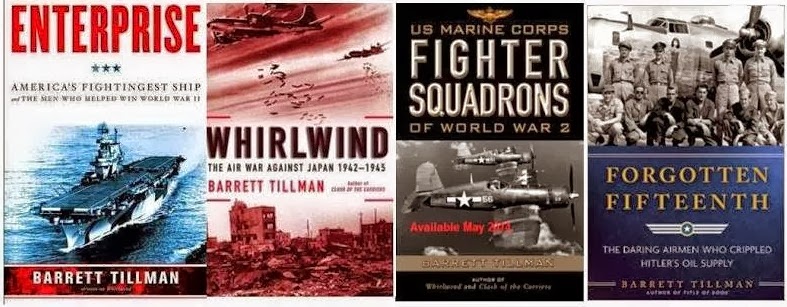This month marks the 75th anniversary of the greatest naval battle of World War II. From October 23 to 26, 1944, the U.S. and Imperial Japanese navies clashed in Philippine waters. The context was General Douglas MacArthur’s promised Return to the islands when he fled the unstoppable Japanese in early 1942. Subsequently the Joint Chiefs in Washington decided to merge the Central Pacific and Southwest Pacific offensives in the Philippines rather than Formosa (now Taiwan) thus setting huge forces in motion.
Oddly enough, the Battle of Leyte Gulf had little to do with Leyte Gulf, but it was the dominant feature of the campaign. The scale could only be imagined today: 236 American and about 80 Japanese warships plus U.S. torpedo boats and submarines while both fleets deployed significant support vessels such as tankers and provision ships. The Americans brought about 1,500 tailhook aircraft aboard 34 fleet and escort carriers while the Japanese Navy had approximately 300 planes in four carriers and ashore.
The U.S. Third Fleet was led by Admiral William F. Halsey, the jut-jawed seadog who had been at war against Japan since December 7, 1941. His carrier commander in Task Force 38 was Vice Admiral Marc Mitscher, a pioneer aviator who relied heavily upon his excellent staff. The amphibious force was led by Seventh Fleet’s Admiral Thomas Kinkaid.
Leyte Gulf has been told and retold dozens of times, and requires little expansion here. The Imperial Navy deployed three units: two powerful surface forces transiting the islands from west to east, and a minimal carrier force well to the north, which was bound to draw attention of the aggressive “Bull” Halsey.
Leading four Japanese carriers was Admiral Jisaburo Ozawa, who had clashed with Mitscher off the Marianas in June. “The Great Marianas Turkey Shoot” all but destroyed Tokyo’s carefully hoarded supply of trained carrier aircrews, leaving Ozawa with a small crop of rookies.
Historians still argue whether Leyte Gulf was a carrier battle. The previous five, dating from Coral Sea in May 1942, all involved mutual exchange of carrier air strikes. They resulted in loss of three U.S. flattops (plus one to a submarine) and nine Japanese—totaling fewer than the fast carriers Mitscher owned in October 44. While a few of Ozawa’s planes flew within range of TF-38, none accomplished anything significant.
The battle began with U.S. submarines stalking Japan’s surface forces west of the Philippines on the 23rd. Events peaked the next day with continuous air strikes that sank one of the two biggest ships afloat but otherwise did little to deter Vice Admiral Takeo Kurita, who continued toward his goal of attacking U.S. shipping in Leyte Gulf. His passage through San Bernardino Strait was reported by U.S. night owls but was ignored by Halsey and Mitscher with disastrous results the next day.
Meanwhile, Japanese land-based aircraft USS Princeton on the 24th, the first American fast carrier lost since October 1942.
Hours later, Vice Admiral Shoji Nishimura’s southern force was annihilated in the last major surface action of all time, a nocturnal slugfest in Battle of Surigao Strait. Outnumbered about six to one, he lost his life and his command, only one destroyer surviving.
Partly due to unnecessarily complex communications, Halsey assumed that his battleships, Task Force 34, were guarding the Leyte side of San Bernardino Strait. With word of Ozawa’s flattops to the north, he took TF-38 to destroy Ozawa, leaving Kinkaid’s amphibious command vulnerable to surface ships. The only American force in the way was “Taffy Three,” six small carriers with their escorting destroyers. During the Battle Off Samar, the immensely outgunned “small boys” fought back with guns, torpedoes, and whatever aircraft could be launched. Other escort-carrier planes added to the effort, forcing Kurita to disengage.
Throughout the day the U.S. Navy lost two escort carriers (one to the first kamikaze mission) and three destroyers.
Halsey’s aviators and “black shoe” surface warriors sank all four of Ozawa’s carriers, but by then his flattops were almost empty shells. The execution continued into the 26th, raising the toll to 28 Japanese warships. The Imperial Navy never recovered.
MacArthur’s forces largely secured the Philippines in April 1945, providing another advanced fleet base for the Pacific Fleet.
Late that year the U.S. Navy owned 6,000 ships including 90 aircraft carriers of all types. It was two-thirds more than 12 months before and over three times the figure in 1941. That month more than 3,000,000 men and women wore navy uniforms.
Today the Navy has about 490 ships and submarines with 438,000 uniformed personnel. Congress mandates eleven carriers but at this writing only two are deployed. The new USS Ford (CVN-78), an enduring boondoggle, was delivered incomplete and may not deploy for another four or five years. Her primary aircraft, the F-35C stealth fighter, is perennially troubled, and in fact took over two years just to qualify in carrier landings. The Lightning II remains in low-rate production until it meets required mileposts for operational capability.
There’s still a great deal of misty-eyed sentimentality about “the greatest generation,” though none of the hundreds of WW II vets I’ve known, met or interviewed bought into Tom Brokaw’s unsupportable assertion. But one thing seems certain: the aircrews and sailors who fought Leyte Gulf represented the greatest assembly of naval talent and capability of the era.



